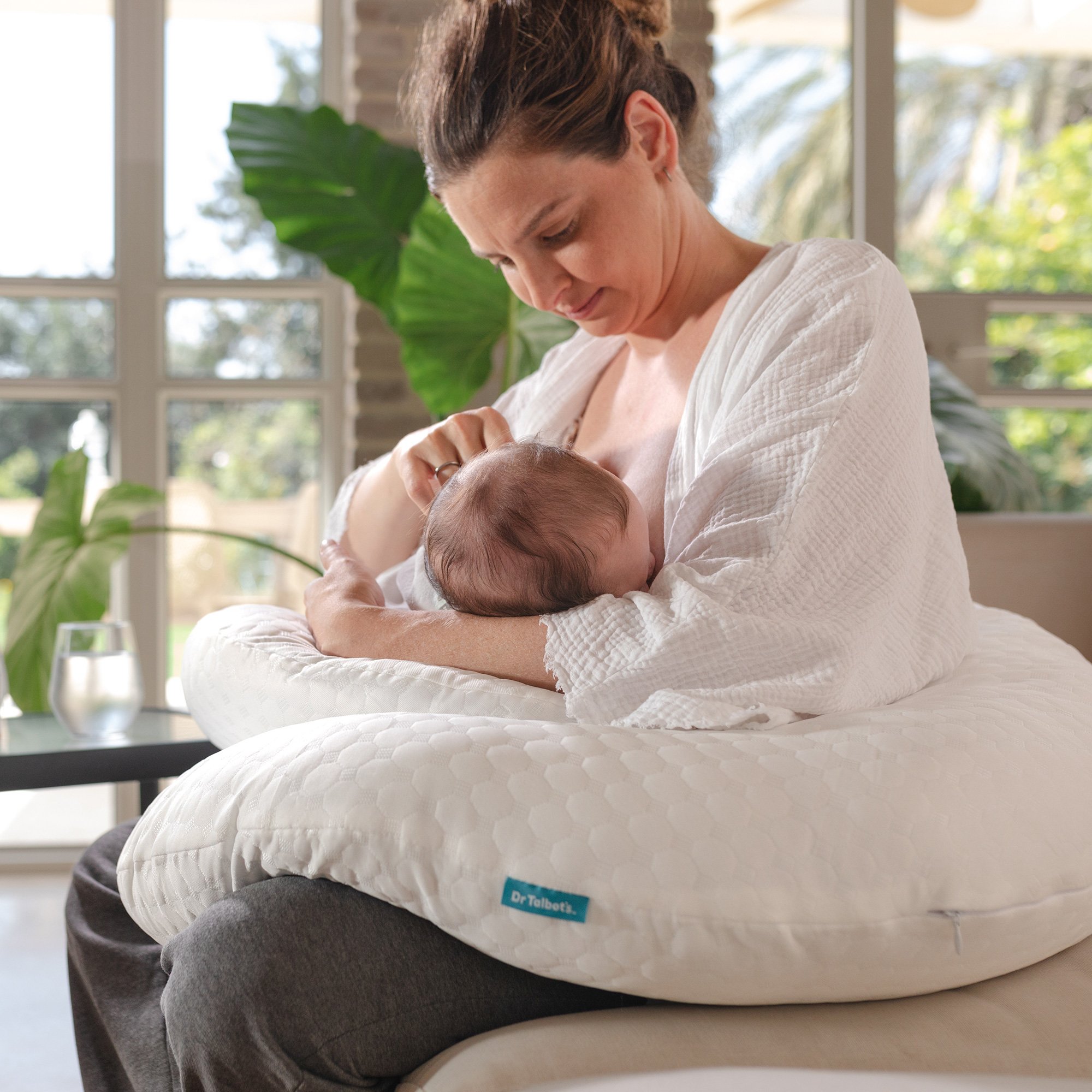The newborn phase is a joyous but challenging time as you establish your 6-day-old baby's feeding routine. Get it right from the start so your baby thrives.
Read our guide to discover tips such as how often a 6-day-old baby should feed. You’ll also find solutions to common concerns like your 6-day-old baby is not feeding.

Understanding 6-Day-Old Baby Feeding
Find out about the importance of feeds and the challenges you may face with your 6-day-old baby.
The Importance of Baby Feeds
Your breasts produce colostrum in the first few days after birth. This milk is packed with nutrients and antibodies to nourish and protect your baby.
By the time your baby is six days old, your breasts will be producing transitional milk. This is the milk that comes after the nutrient-rich colostrum produced in the first few days of your baby’s life. Transitional milk is higher in fat, calories, and protein and is the perfect food for your 6-day-old baby.
Breastfeeding means your baby can enjoy the benefits of this nutritional milk. As it’s readily available, it’s convenient too. However, breastfeeding is a personal choice and some moms may feel that it’s not for them.
Bottle feeding is a great alternative. Another family member can take over to give you a break. It also means you can see how much milk your baby has had at each feed. If you do choose to bottle feed, you’ll need to take care to sterilize equipment.
Common Feeding Challenges for a 6-Day-Old Baby
It could be that your 6-day-old baby is feeding all night.
Or it may be that your little one is refusing to feed or sleeping at meal times.
These concerns are very common, so don’t worry — read our tips to help you.
6-Day-Old Baby Feeding Schedules
Find out about 6-day-old baby feeding schedules to help you get into a routine.
Typical Feeding Schedule for a 6-Day-Old Baby
The AAP (American Academy of Pediatrics) recommends that you feed your 6-day-old baby on demand. Newborn babies need feeding every 2 to 3 hours. This means you could be offering feeds between 8 and 12 times every 24 hours.
If you’re breastfeeding, you will produce around 500 ml or 16.5 ounces of milk per 24-hour period.
And if you’re bottle feeding, you should give your baby 28.5 ml to 57 ml or 1 to 2 ounces around 8 times a day.
Look for cues that your baby is hungry:
- They move their hands to their mouth.
- They become more alert.
- They turn their head to look for milk.
Adjusting Feeding Schedules Based on Baby's Needs
If your 6-day-old baby is feeding constantly, you may consider bottle feeding. You can do this on its own or in combination with breastfeeding. This means you can hand over to your partner and get a break.
If your 6-day-old baby is experiencing difficulties related to breastfeeding latch and positioning, see a lactation consultant.
And if your 6-day-old baby is feeding all night, make sure you have a comfortable space to feed in. Rest while your baby naps if you're able to. You can also try giving them a later feed to help them sleep for a longer time at night.

Breastfeeding and Bottle Feeding Tips
Follow our tips to help you with breastfeeding or bottle feeding your baby.
Tips for Successful Breastfeeding
Get into position to breastfeed your baby:
- Sit comfortably with your back supported. A C-Shape pregnancy pillow makes for a supportive nursing pillow.
- Hold your baby with their head and body in line.
- Hold them close to you so they are facing your breast.
- Keep their neck, shoulders, and back supported.
Here’s how to help your baby latch on:
- Ensure that their nose is level with your nipple.
- Gently tip their head back and let them open their mouth wide.
- Guide them towards your nipple.
You can ensure your baby is getting enough milk by:
- Ensuring they latch on properly at feeds.
- Feeding them whenever they are hungry.
- Expressing breast milk after feeding to stimulate supply.
- Feeding them from both breasts at each feed.
Consult your pediatrician if you have any concerns about feeding.
Bottle Feeding Guidelines for a 6-Day-Old Baby
Get set up with the right equipment to bottle feed your 6-day-old baby.
Make sure the formula you choose is right for your baby — look for a newborn formula.
Choose a bottle that’s safe from harmful materials and a nipple with a slow flow rate, suitable for newborns. You can opt for an anti-colic bottle too, which minimizes the amount of air your baby swallows.

To bottle feed your baby:
- Sit with your baby in a semi-upright position. Make sure you are comfortable too.
- Gently brush the bottle’s nipple against your baby’s mouth. When they open their mouth, place the nipple carefully inside.
- Keep the bottle in a horizontal position while your baby feeds.
Tools and Logs for Tracking Feeding
Tracking your baby’s feeds can help you establish a routine.
Maintaining a Feeding Log
There are lots of different ways to set up and maintain a feeding log.
You can use a notebook to record the date and time of feed and the amount of milk consumed (if bottle feeding) or time spent feeding (if breastfeeding).
You can also use a feeding tracking app on your cell phone.
Tools to Help with Feeding
Here are some of the tools to help you with successful bottle feeding:
- Anti-colic bottles have special valves to reduce the amount of air ingested by your baby.
- Newborn formula supports a 6-day-old baby’s nutritional needs.
- A breast pump helps to stimulate and maintain your milk supply.
- Breast pads and nipple cream are essential for your comfort.
- A breastfeeding pillow will support you during feeding sessions.
The Key to Health and Well-Being
Understanding how newborns feed is the key to their good health and well-being.
Follow the tips in our 6-day-old baby feeding guide to help get your little one off to the best start in life.